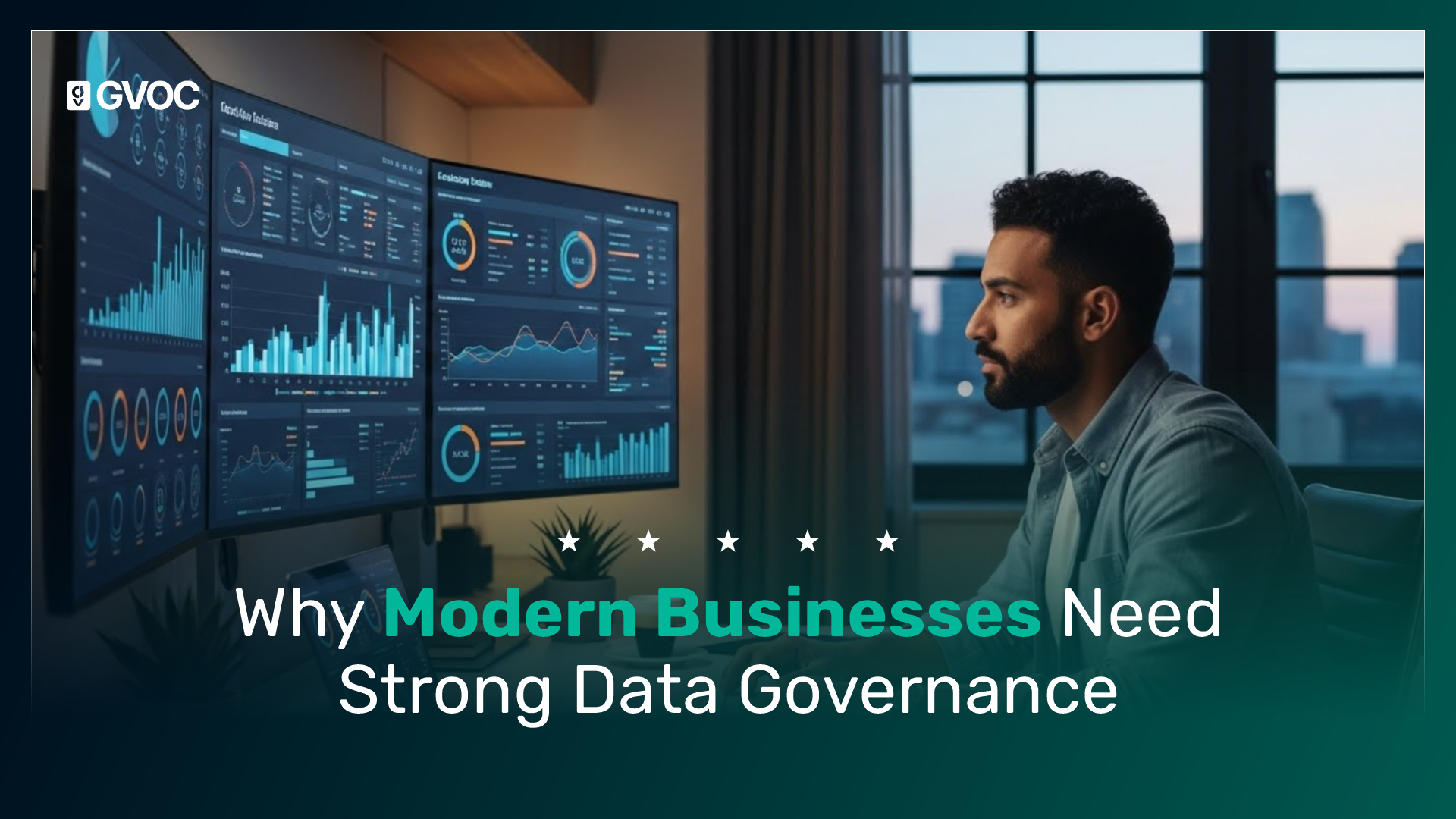%5B1%5D.png)
Data Security
Every few seconds, a business somewhere in the world falls victim to a data breach. That sounds dramatic—until it happens to your company. Whether it’s leaked customer info, lost financial records, or internal documents exposed, data breaches don’t just hurt your IT team—they damage your brand, your revenue, and your customers’ trust. At GVOC, where we help businesses grow with data, we know one hard truth: if your data isn’t safe, your business isn’t either. But here’s the good news—basic data protection doesn’t have to be complicated. You don’t need a massive cybersecurity team or a million-dollar software license. What you do need is to follow a few simple, smart habits that create a safety net around your business.
Content
This guide walks you through 5 practical steps every business can take to keep their information secure.
1. Train Your Team (Because Humans Are the Weakest Link)
Let’s be honest—most data leaks don’t start with a hacker in a hoodie. They start with an employee clicking a shady email link, reusing the same weak password across accounts, or sending sensitive files over unsecured apps.
Human error is the #1 cause of data breaches.
That’s why employee training is your first line of defense. You don’t need to turn your staff into cybersecurity experts—but they should know how to:
- Spot phishing emails (those sneaky messages that pretend to be real but aren’t)
- Use strong, unique passwords (and never write them on sticky notes!)
- Avoid public Wi-Fi for work-related tasks
- Recognize suspicious file downloads or requests for login info
Pro tip: Hold a quick quarterly workshop or email out a “data safety tip of the week.” Make it fun. Make it stick.
Because when your team is aware, your business is safer.
2. Keep Software Updated—Always
You know those annoying software updates that pop up at the worst time? Yeah, the ones we all love to ignore?
They’re actually your best friend in the fight against cyberattacks.
Updates aren’t just about new features—they often patch security flaws that hackers are waiting to exploit. Running outdated software (especially operating systems, antivirus, or customer management tools) is like leaving your front door wide open.
So, make it a rule: update everything, regularly. That includes your laptops, mobile apps, server software, even your website plugins.
At GVOC, we help our clients build dashboards and systems that are always optimized—but keeping those systems secure requires regular attention. Even the best BI tools can become vulnerable if left outdated.
3. Use Two-Factor Authentication (2FA)—No Excuses
Ever get a text or app notification asking to verify your login? That’s 2FA—and it’s one of the easiest ways to stop hackers in their tracks.
Why? Because even if someone steals your password, they’d still need access to your phone or email to get in.
We strongly recommend enabling 2FA on everything that matters:
- Your business email accounts
- Cloud storage platforms (Google Drive, Dropbox, etc.)
- Customer data platforms (CRM tools, sales dashboards)
- Banking and finance apps
It might feel like an extra step, but it’s one that can block nearly 100% of automated hacking attempts.
In business data security, 2FA is your digital seatbelt.
4. Back Up Your Data Like Your Business Depends on It (Because It Does)
Imagine waking up tomorrow to find all your business files wiped out. Client records, invoices, analytics, contracts—gone.
It sounds extreme, but ransomware attacks (where hackers lock your data and demand money) are rising fast. Natural disasters, power outages, or accidental deletions can be just as devastating.
The solution? Back up everything. Regularly. And store backups in multiple places—like the cloud and an external hard drive that isn’t always connected to your system.
Make backup checks part of your business rhythm. Set a reminder to test and update backups weekly or monthly. Trust us—it’s easier to prevent disaster than recover from one.
5. Limit Access: Not Everyone Needs the Keys to the Kingdom
This one’s big. The more people who have access to sensitive data, the higher the risk of something going wrong—accidentally or intentionally.
So instead of giving every staff member full access to everything, set role-based permissions.
Only the finance team should access payroll files. Only your customer service team should view customer tickets. Marketing doesn’t need full sales reports, and your intern definitely doesn’t need admin rights on your BI dashboard.
At GVOC, our dashboards are built to reflect this logic. Whether you're tracking customer insights or financial metrics, access can and should be tailored by role. It’s smart management and it protects your business.
Business Data Security Is Everyone’s Job
Here’s what it all comes down to: your business data is one of your most valuable assets. Protecting it is not just an IT responsibility, it’s a business responsibility. And in today’s world, it’s also a leadership responsibility.
When you lead with security in mind, you protect more than just numbers—you protect your customers’ trust, your company’s reputation, and your ability to grow with confidence.
You don’t need to be a tech genius to start. You just need to take the first step.
Final Thoughts (and a Little Help From GVOC)
Securing your data doesn’t mean locking it all away. It means building smart systems and habits that allow your business to grow safely. From business intelligence dashboards to customer insights, GVOC helps companies like yours make the most of their data—without putting it at risk.
We believe in empowering business owners and managers with tools that are powerful and secure. If you’re ready to learn how we can help you level up your business data security while still making data-driven decisions, let’s talk.
Visit 👉 www.gvoc.co to learn more.
Author
Nafisat Jayeola
Lead Data Analyst
Author
Case Studies & Strategies
Dive into our newsletter for a wealth of knowledge in digital marketing







.svg)

.png)


.svg)

.svg)





